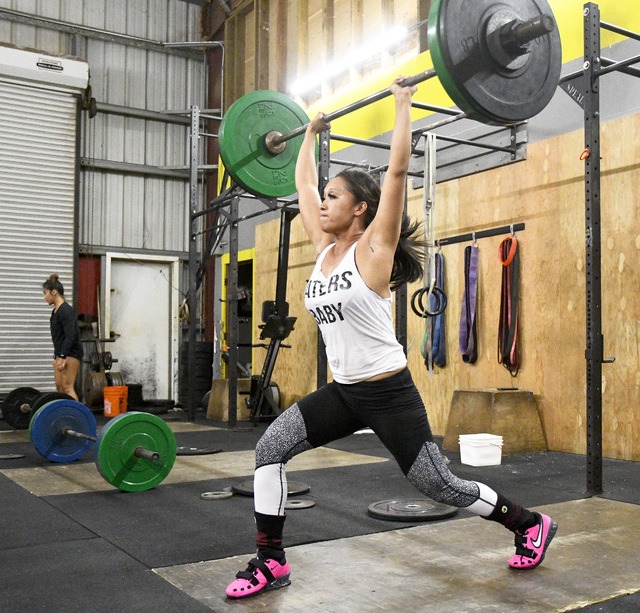This question is one that is commonly asked this time of year when people are on the New Year’s resolution road to health and wellness.
The primary question is which do you really think is better for burning calories and changing your metabolism: cardio workouts or strength training? The short answer is, and you’re not necessarily going to like it, neither gives you a complete method for weight loss and both are needed to a degree to maintain optimal health.
The best approach to weight management starts with nutrition. You can workout every day, run, lift weights and be dedicated to both yet fail to see any real weight management if your nutritional footprint is not addressed. However, this does not mean you need to go on a diet. I personally do not believe diets work. Since diet programs have a failure rate that hovers around 98 percent, it is easy to lose faith in trendy diet fads and programs.
The answer starts with the type of foods you eat and the balance of each macronutrient you intake. Balancing and controlling your macronutrients means that you manage the daily percentages of carbohydrates, protein and leverage your fat consumption as fuel. Some great methods to look at are primal and/or paleo eating habits along with dropping grains, refined sugar, and highly processed foods from your diet.
How weight loss can be achieved without a diet program is to change your habits in what you eat and portioning the proper amounts of whole foods. Everything you do needs to be based on a long-term shift in eating habits with a high level of consistency in what you eat.
Now when we look at cardio training vs. strength training, we need to consider these aspects as tools for managing proper weight and body composition. Here is what we need to know: as you age you lose muscle. “If you don’t use it, you lose it.”
It has also been proven you burn more calories when you do 30 minutes of weight training than when running for 30 minutes, assuming the intensity of the workout is the same. We also know that the more cardio you do, the stronger your heart, lungs, and endurance becomes.
On the other hand, we also know that improper eating habits tied to high-volume aerobic exercise without strength training can cause muscle loss. Your body will use muscle to feed itself. We also know the more cardio you do and the more muscle you have, the more fat is cured as fuel.
We, humans, are actually designed to be fat-burning machines. Since most of us overconsume carbohydrates, which is an easy go-to fuel, we tend to only burn carbs and little fat. As you can see, once you get past the whole good nutrition with a proper balance of carbs, protein and fat we need to lean on cardio and strength training mechanisms to define how our body burns fuel.
Here are a few basics on energy conversion you need to understand. Cardio is an “aerobic exercise,” running, cycling and swimming, which require a great deal of oxygen to generate the energy needed for prolonged exercise.
Strength training is “anaerobic exercise” and an example of this type of activity is weight training. Basically oxygen is not needed to generate energy from this type of activity.
Both aerobic and anaerobic activities use two energy sources. Your aerobic activities use oxygen, glycogen (sugar) and fat stores, which becomes your energy source. Anaerobic activities use ATP (adenosine triphosphate) and rely on creatine phosphate and lactic-acid or anaerobic glycolysis that uses glycogen in the absence of oxygen as its energy source. Both activities burn calories in the form of fat and glycogen stored in the body, liver, and muscles.
Here is a simple break down to incorporate both cardio and strength training into a single fitness regimen coupled with good nutrition:
1. Pro-Cardio
The heart muscle develops stronger muscular walls making the heart work at a much more efficient pace. As our heart and lungs become stronger and more efficient, oxygen delivery along with burning calories becomes enhanced. There is the increased elasticity of the arteries and it increases the numbers of capillaries within muscles, improving circulation and muscle development.
2. Pro-Strength
Muscles and joints become stronger helping injury prevention. Weight training will help build muscle tissue and slow muscle loss as we age. The added muscle increases our fat burning naturally. This, in turn, improves your body’s consistency in burning fat even at rest. Our muscles place a high demand for fuel and our bodies become very efficient when we become fat burning machines.
The collaborative benefits of proper nutrition, balanced macronutrients, cardio exercise, and strength training become a complete wellness package. This combination not only gives you optimal weight management, it will reduce the risk of heart disease, increase bone density, reduce stress and improve sleep, all of which build a strong overall healthy body.
•••
Judd Jones is a Certified Primal Health Coach and Fitness Consultant in Coeur d’Alene, Idaho. He can be reached at jjones@cdapress.com and www.jhanawellness.com.




Great article! Anyone interested in this stuff should definitely check out the book Everyday Roots. It teaches you how to replace all the toxic chemicals in your life with healthy organic alternatives. Its completely changed my life and how I feel everyday! 🙂
Heres a great review of everday roots: http://reggiesreview.weebly.com/everyday-roots-review.html
Keep up the great content!